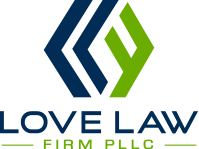Distinguishing between types of intellectual property can be a challenge for a small business owner. This is a brief overview of three main types – Copyrights, Trademarks and Patents.
Intellectual Property Types
- Copyright. This protects an individual’s written or artistic expression preserved in a tangible medium, such as a book, poem, song, or movie. The copyright owner can exclude others from using the exact expression—or even excerpts from it—for their own commercial purposes.
- Trademarks. A trademark identifies the source of a good or service. It can be a name, slogan, image, color, or symbol (among others). Trademarks are divided into classes of goods and services for brand identification. Owning a trademark means that the owner can exclude other people from using the name identifier for their similar product.
- Patents. A patent grants an individual or organization the legal authority to exclude anyone else from producing its unique tangible assets. A patent is granted for physical goods that are useful, novel, and nonobvious (more on that later). A patent applicant must disclose how the goods are made in exchange for the right to exclude competition for a period of time. Patents can also be registered in other countries to protect a patentholder from international competition. This protection lasts for 20 years before it must be renewed.
Basics of Copyright
Copyright laws protect original works of authorship that are fixed in a tangible medium of expression. This includes literary, dramatic, musical, and artistic works. Many of us are familiar with various copyrighted works, because all original, creative works are under copyright protection the moment they’re created. Anyone who has read a mystery novel, watched a movie, visited a museum, or listened to the radio has encountered various copyrighted works. For example, all books, movies, soundtracks, dramatic plays, and various other works are copyrighted.
While all original, creative works are technically under copyright protection when they’re created and fixed in a tangible medium, it is still important for the creator to register the copyright with the United States Copyright Office. Registration of the copyright is a prerequisite to the right to sue for copyright infringement in the U.S. Thus, without registering, there’s no legal remedy if copyrighted materials are misused. Moreover, registered works may be eligible for certain damages and attorney’s fees in litigation.
Owners of copyrights enjoy many benefits, such as the exclusive right to reproduce the work, distribute copies of the work, perform the work publicly, and display the work publicly. They also have the option to transfer or sell these rights to another party if they so choose. One of the most interesting rights is that of creating derivative works based upon the work, also known as adaptation rights.
Take as an example, the Harry Potter series of books. Once J.K. Rowling wrote the first book, she held the exclusive right to create and distribute sequels of the book, as well as translate those books into other languages. She also held the right to adapt it into other forms such as movies and plays–as she has done to her enormous financial benefit. By obtaining copyright protection for her original work, she was able to build on her ideas and create one of the most universally recognized literature franchises in the world.
In some circumstances, certain classes of unpublished works that have a history of infringement before commercial distribution can be submitted for preregistration before they are completed, such as motion pictures and sound recordings. For example, someone making a feature film may be concerned that an employee or hacker could leak parts of the movie to the public before its official release date. In that case, pre-registration could protect the work until it is ready for its big debut, and registration afterwards will continue the protection. NOTE: pre-registration is not a substitute for registration, and registration must occur within certain time periods in order for the protection to be valid.
Basics of Trademark
Trademarks are arguably the most universally important type of intellectual property for businesses, even though many small entities fail to take advantage of the protections a trademark provides. A trademark is a source identifier such as a brand, name or logo.
In order to obtain trademark protection, the main requirement is usage. There are two main methods to assert trademark protection. The TM symbol is used to claim an unregistered or common law trademark that is based on your active, continued use of the distinctive image or name. This is the simplest way to apply intellectual property protection to these types of work products, but it only entails a limited scope of protection.
The alternative method is to register your mark with the United States Patent and Trademark Office (USPTO)—which offers increased protective measures and makes it easier for your business to assert its rights in the event you are forced to take legal action. Once your mark is registered, then you are able to use the ® symbol.
Trademarks do not enjoy any protective measures until and unless they are disclosed to consumers, as only then that the public is able to associate it with a given organization. This is where the protection comes in: to prevent the possibility that consumers confuse the origin or nature of a given product or service after they have associated it with a particular producer. To avail itself to trademark rights, a company must use the mark in commerce. There is an option to register a trademark at both the federal and state levels; however, this step is not a prerequisite to safeguard a trademark.
A trademark is what distinguishes your business, and its products or services, from all others. You can probably picture the trademarks of many classic rivalries in your head: Starbucks vs. Dunkin’ Donuts, Coca-Cola vs. Pepsi, or McDonald’s vs. Wendy’s.
The visual associations these businesses have created with their trademarks makes them easy to find on a crowded shelf or a busy street, and they encourage you to play favorites by creating a brand you can align yourself with.
While generally speaking, trademarks come in the form of a word, slogan, design, symbol, or some combination of these elements, some trademarks can even include a unique scent, color or sound. Brand names and logos are often trademarked to allow consumers to distinguish between various products, as well as identify the source of those products. Trademarks can carry a lot of meaning for different people. Building visual associations with your business will create a lasting memory for your customers and bring you to the front of their mind next time they need the product or service that your business offers.
Registering a trademark with the USPTO involves several steps, the most important of which is choosing a mark that is registerable and protectable.
One requirement for registering your trademark requires that there is no likelihood of confusion between the mark and an existing trademark. In fact, a likelihood of confusion between the applicant’s mark and an existing mark is the number one reason the USPTO refuses registrations. Confusion is most likely to arise when the marks are similar, and when the marks are used in connection with a similar product or service, such that a consumer is likely to believe that they have the same origin.
The likelihood of having your trademark registration approved will also increase significantly if the mark is considered “strong.” Strong trademarks have characteristics that are easy to protect due to their unique nature, and the strongest trademarks are categorized as fanciful and/or arbitrary. Fanciful trademarks are created using made-up words with no dictionary definitions. You are probably familiar with some fanciful trademarks already: KODAK, EXXON, and XEROX are famous examples of fanciful trademarks. Arbitrary trademarks use known words, but those words have no classic connection to the goods or services they protect. Good examples of arbitrary trademarks are DOVE for soap, or APPLE for computers.
Words that merely describe what your product or service is, such as “creamy” for ice cream, or “high quality” for a catering service, will likely be words that everybody else trying to sell those products or services will also want to use. As New Yorkers know all too well, there are hundreds of pizza joints throughout the boroughs that call themselves the “Original New York Style Pizza.” This is why descriptive trademarks often get rejected.
It is important to understand that the USPTO will not enforce or police use of your trademark. This means the task is up to you. In fact, failure to police your mark may cause you to lose your trademark rights.
Basics of Patent
A patent is essentially an exclusive right to commercialize or license an invention or concept. To acquire a patent registration, your idea must meet certain prerequisites, including that it is new, inventive and useful. With a patent, the complete details regarding the method or product have to be submitted to the patent office, which will then make such information publicly available upon publication. Once the patent expires, competitors are able reproduce the method or product. The temporary monopoly on the subject matter of the patent is regarded as a tradeoff for making the privileged information publicly accessible.
Note that if you have already gone public with your invention, it may not be deemed new and you may not be able to obtain a patent for it. A common misconception is that a patent is reserved for inventors of unique, cutting-edge gadgets. The truth is that many businesses can profit from acquiring patents, and not just those involved in manufacturing or technology industries. The USPTO has made it explicitly clear that patents are intended to protect a wide array of innovations—even those that merely serve to improve on existing inventions as long as the new addition is novel and non-obvious.
Applying for patents is generally a straightforward process, but the materials required to successfully do so can be complex and challenging to compile—especially if the new idea is complicated.
There are three general categories of patents
- Design. Design patents protect ornamental/physical characteristics of your work product.
- Utility. Utility patents cover machines, manufactured products, processes and new compositions. This is the most common type of patent applied for by corporations: The USPTO reports that Utility patents account for 90% of all patent requests.
- Plant. Plant patents are used for distinct, discovered, or invented asexually-reproduced plants including hybrids, seedlings and mutants.
A patent can be used to gain entry to a market; exclude others from a market; or promote unique aspects of a product. In addition, a patent can be sold or licensed like other assets.
Need Help With Your Copyright, Trademark or Patent?
We are here to help small business owners with the protection of their intellectual property. Reach out to us to discuss how to keep your most important assets safe.
Francine E. Love is the Founder & Managing Attorney at LOVE LAW FIRM PLLC which dedicates its practice to serving entrepreneurs, start-ups and small businesses. The opinions expressed are those of the author. This article is for general information purposes and is not intended to be and should not be taken as legal advice.


